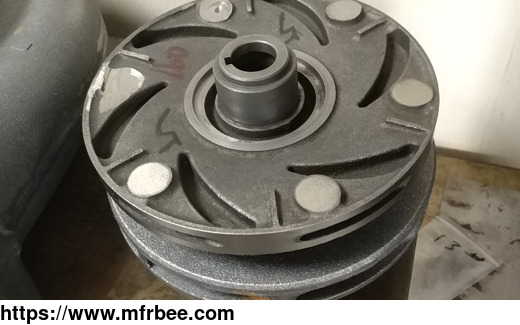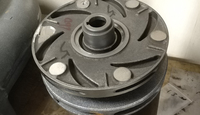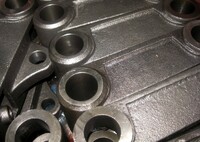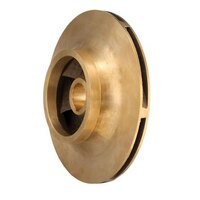Sodium Silicate Sand Casting
Specifications
Sodium silicate sand casting is soluble in water in various amounts. A more common name for sodium silicate is water glass, which is used in iron or steel sand casting. The water glass works as a
binder of the sand. Using sodium silicate sand binder allows the rapid production of a strong sodium silicate casting mold, by CO2 through the mixture of sand and sodium silicate in the mold, which
hardens it almost instantly. The process is called sodium silicate co2 molding. Sodium silicate is a generic name for chemical compounds with the formula Na2SiO3. This material is generally
colorless transparent solids, or in white powder, non-toxic and non-inflammable.
Sodium Silicate Casting Products Properties
dimension tolerance ±0.5mm, CT7~8;
surface finish Ra3.2;
wall thickness up to 7mm;
unit weight extent 1~20000kg;
unit size limitation of 0.03~3.5 meter;
degree of complexity- complex;
machining required- normal;
production lead time- short;
production cost- low.
What is sodium silicate Moulding?
Though in most conditions, sodium silicate is one of the types of sand casting and considered to be applied in sodium silicate sand casting. Actually it also could be applied in the sand casting.
Besides, sodium silicate sand casting is more suitable to make large and complex structures with an even better surface finish and fewer defects.
Sodium Silicate Molding Process and Principle
Sodium silica sand casting process can be divided into the following detailed steps:
Melt the glass and mold it through the mold.
Generally, realize that after the sodium silicate casting mold is made.
The glass melt is injected into the sodium silicate casting mold or realizes that the pre-made mold is stacked with glass scrap in the mold.
Put into the furnace together with the mold for melting.
Anneal the sodium silicate sand casting mold with the glass domain anastomosis after molding.
- Country: China (Mainland)
- Address: No.1-101, building no.18, gate no.189, Nanneihuan street, Yinze district, Taiyuan city, Shanxi province, China
- Contact: rayforce com










